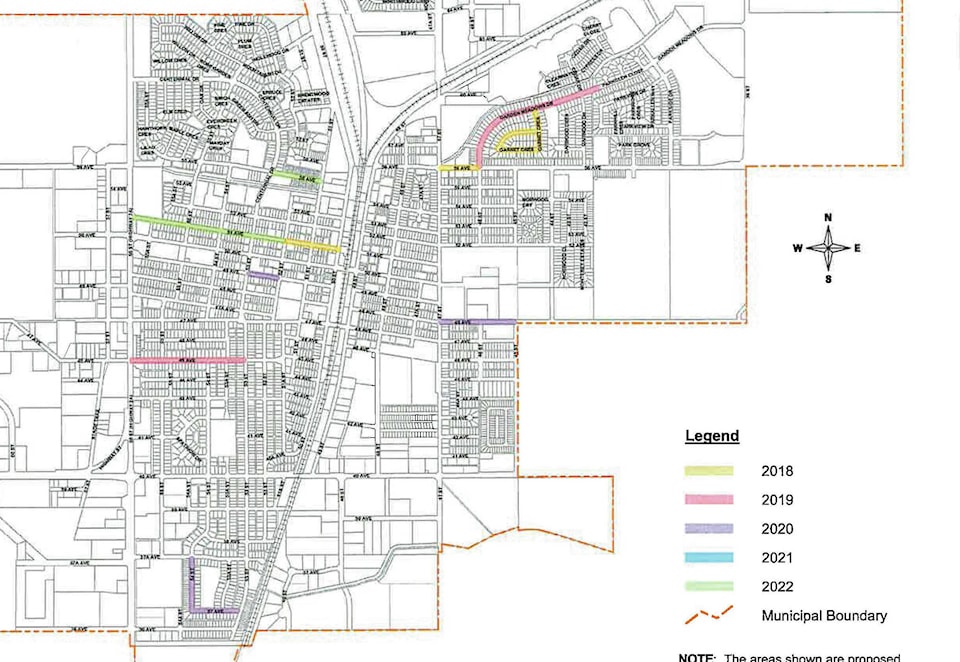Unless unhappy citizens manage to file legal petitions, it looks like part of upcoming residential road construction will be paid through an extra City of Wetaskiwin tax on adjacent property owners.
The issue of the “local improvement tax” was the subject of an open house at the Wetaskiwin Memorial Centre.
Lined up around the corner of the block to get into the open house Mar.21, hundreds of Wetaskiwin residents gathered at the Memorial centre to hear a presentation by City of Wetaskiwin senior staff about where the local improvement tax came from, why residents have to pay it and what they’ll get in return for their money.
With mayor Tyler Gandam and city councilors occupying a table off to the side, the event was opened by city manager Dave Burgess, who almost immediately answered the question that was on everybody’s mind: why did city council approved this tax to make property owners pay directly for road improvements in their neighborhoods?
Burgess and Director of Engineering and Development Sue Howard had a visual presentation that showed what general taxes from the public go towards, including salaries, police, fire department, snow removal and financing the city operations among other things.
“That’s what your actual, normal taxes go towards,” said Burgess to the crowd.
He stated the local improvement tax approved by city council in January, 2018 includes an extra tax to pay for road renovations that the council considers “local;” that is, the benefits of the work are to the property owners in that area and not necessarily the general population of the city.
Burgess also stated the road improvements plan (see map), which begins in 2018 and continues for five years, will include 50 per cent of the funding from the city, and 50 per cent through the local improvement tax, so general revenues, to a certain extent, will still be used for the projects.
Howard then described the road situation in certain parts of the city. She said the general road conditions in the City of Wetaskiwin are only fair, and some sections are worse. Some, she noted, are even worse than that.
Generally, the amount of money that a property owner pays, according to information handed out at the meeting, comes from the Municipal Government Act and is based on how much frontage each property has along the road being improved and if the property benefits from the improvement even if it doesn’t abut the project. City-owned properties also pay their share.
It was noted at the meeting a property owner’s share of the improvements, very likely in the thousands of dollars, can be paid in a lump sum immediately, or paid in increments on a resident’s tax bill.
Howard noted that utility work that is needed during the road improvements will be paid through utility bills and isn’t included in the local improvement tax.
Also included in the handouts to those who attended was a “petition information package” for those who were interested in challenging the local improvement tax. In was stated in the documentation, “If you wish to petition against this local improvement plan, it must have support from two-thirds of the property owner liable to pay the local improvement tax and must represent 50 per cent of the total assessed value for the plan area. If a group of property owners successfully defeat a proposed local improvement bylaw, the proposed redevelopment will then be moved to the bottom of the priority list. Property owners may be subject to a lower level of service by this reprioritization.”
More information is available online at http://wetaskiwin.ca/index.aspx?nid=817.
